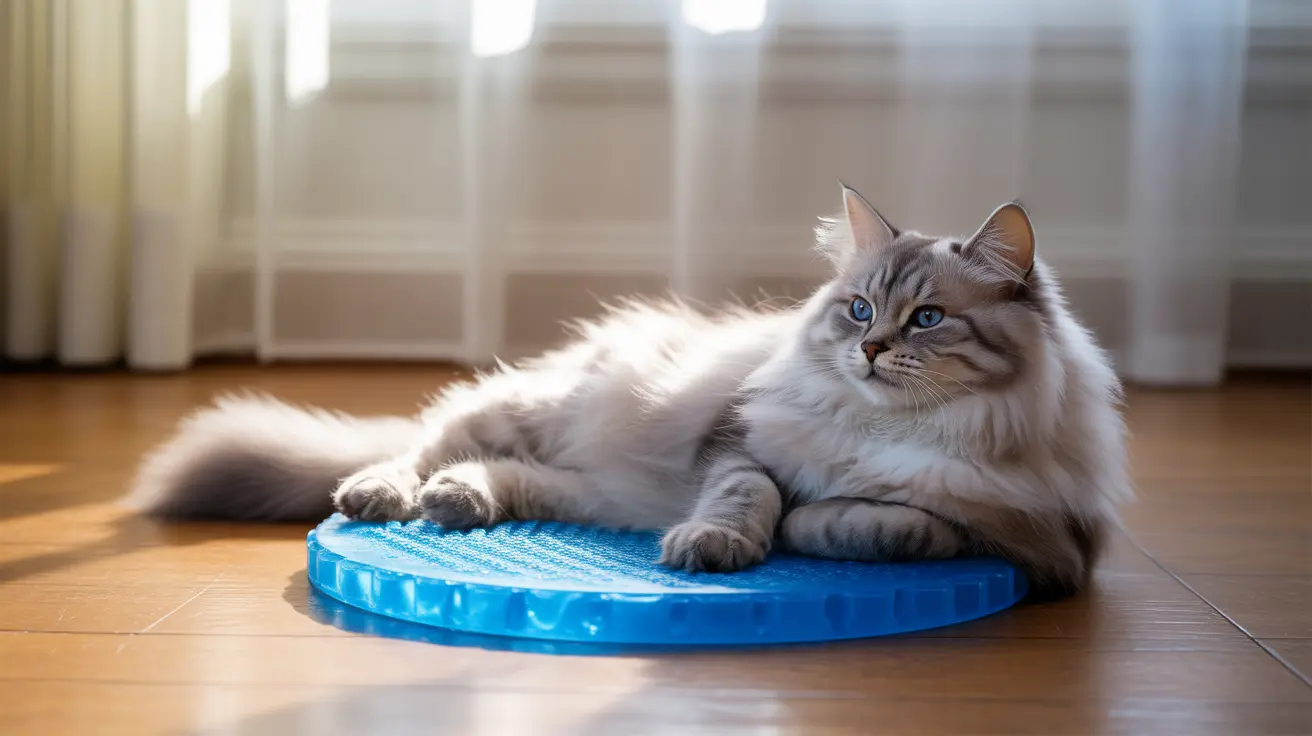Understanding Why Cats Need Cooling Support
Despite their desert-dwelling ancestry, modern house cats can struggle with temperature regulation, especially in extreme heat. Cats have limited sweat glands and primarily cool themselves through their paw pads and breathing. When temperatures rise, they become susceptible to overheating, particularly if they're seniors, long-haired breeds, or have health conditions.
Types of Cooling Pads Available
Commercial Gel-Based Mats
These popular options use pressure-activated gel technology that maintains a cool temperature for several hours. They're convenient, require no electricity or refrigeration, and automatically recharge after brief periods of non-use.
Water-Based Cooling Mats
Featuring a reservoir for cold water or ice, these mats provide consistent cooling but require more maintenance and carry a risk of leaks.
Frozen or Refrigerated Options
These include ice pack-based mats and freezable gel pads, offering intense cooling that needs to be monitored to prevent discomfort.
Creating Your Own DIY Cooling Pad
Simple Homemade Solutions
Several effective DIY options use common household items:
- Cornstarch and salt mixture in sealed bags
- Dampened towels or cloth
- Modified ice packs with protective covering
- Water-filled sealed bags wrapped in fabric
Safety Considerations for DIY Pads
When making your own cooling pad, ensure all materials are pet-safe and properly sealed. Always wrap frozen elements in protective fabric to prevent direct skin contact.
Best Practices for Using Cooling Pads
Placement Tips
Position cooling pads in your cat's favorite resting spots or areas they frequently visit when seeking relief from heat. Consider placing them:
- Near windows where they sunbathe
- In their regular sleeping area
- Under existing cat beds
- In shaded outdoor spaces
Duration and Monitoring
Watch your cat's interaction with the cooling pad and limit initial exposure to 15-20 minutes. Observe their comfort level and adjust usage accordingly.
Signs Your Cat Needs a Cooling Pad
Look for these indicators that your cat might benefit from a cooling pad:
- Excessive panting or rapid breathing
- Sprawling on cool surfaces like tile floors
- Seeking out shaded areas
- Decreased activity during hot weather
- Grooming less frequently than usual
Frequently Asked Questions
How does a cooling pad help my cat regulate body temperature during hot weather?
Cooling pads work by conducting heat away from your cat's body through direct contact. They provide a cool surface that helps lower body temperature naturally, similar to how cats seek out cool tile or concrete surfaces during hot weather.
What types of cooling pads are best and safest for cats, especially long-haired or senior cats?
Gel-based commercial cooling pads are generally the safest and most effective option, especially for long-haired and senior cats. They provide consistent cooling without the risk of leaks or excessive cold that could cause discomfort.
Can I make a DIY cooling pad for my cat, and what materials work best?
Yes, you can create DIY cooling pads using materials like cornstarch and salt mixtures, frozen water in sealed bags, or ice packs wrapped in protective fabric. Always ensure materials are non-toxic and properly sealed.
How long should my cat use a cooling pad at one time to avoid discomfort or frostbite?
Limit initial cooling pad sessions to 15-20 minutes and monitor your cat's response. If using frozen or very cold elements, always provide a protective barrier like a towel or fabric cover.
What signs indicate my cat is overheating and needs a cooling pad to stay safe?
Watch for signs like excessive panting, lethargy, drooling, rapid breathing, or seeking cool surfaces. If you notice these symptoms, a cooling pad can help provide immediate relief while you monitor their condition.
Conclusion
Cooling pads for cats provide an effective way to help your feline friend stay comfortable during warm weather. Whether you choose a commercial product or create a DIY solution, ensuring your cat has access to a cooling pad can significantly improve their comfort and help prevent heat-related stress. Remember to monitor your cat's use of the cooling pad and always prioritize safety in your choice of materials and implementation.






